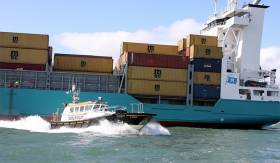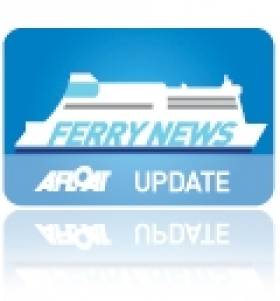Displaying items by tag: Rosslare Eurport
#ShippingReview - Jehan Ashmore reviews the shipping scene from among the following stories of recent weeks.
‘Safe and sustainable’ marine transport and ‘delivery of emergency management services’ have been made a high level goal in the Department of Transport’s Statement of Strategy 2016-2019
UK shipbuilder Cammell Laird saw profits and sales fall last year – but the shipyard on Merseyside where Irish Ferries flagship Ulysses (currently drydocking) remains upbeat to win more contracts.
Ardmore Shipping Corporation the product/chemical tanker operator which has its Principal Operating Office in Cork City has made several appointments to overseas offices.
To prepare for a hard Brexit, Enterprise Ireland is advising firms here amid growing signs the British government may opt to quit the single market in order to regain full control over immigration.
County councillors from all main parties of Dún Laoghaire-Rathdown expressed concern at potential financial liabilities in the transfer of Dún Laoghaire Harbour.
In recent weeks at Rosslare Europort dredger Sospan Dau carried out work within the harbour to remove spoil offshore, benefitting not just ferries but cruiseships and timber trading cargoships.
Arklow Castle was launched in the Netherlands as the third ‘C’ class newbuild of a 10-ship order from ASL. The 5,054dwt cargoship slid into the canal at Ferus Smit shipyard in Westerbroek.
Busier Scene in Rosslare as Dredging, Bunkering and Ferrying take Place
#BusyScene- Rosslare Europort is busier than normal as vessels involved in dredging undergo there business while routine ferry operations continue, albeit this morning's Stena Line sailing to Fishguard was cancelled, writes Jehan Ashmore.
Stena Line cited that the Stena Europe had technical problems. She is this evening making a St. Georges Channel sailing heading to Rosslare from where passengers will be accommodated on the ship's sailing tonight departing as usual at 21.15hrs for Fishguard.
A fleetmate, Stena Horizon which operates Rosslare-Cherbourg service is berthed at the Irish port. On the adjacent berth was short-sea tanker, Mersey Spirit (1996/1,467grt) which departed after mid-afternoon. The 77m long tanker had docked in Rosslare having sailed from Liverpool docks to discharge bunkers used for Stena Line.
Stena also have bunker shipments supplied to Holyhead for the two-ship operated route to Dublin Port. The most recent caller late last month was Keewhit (2003/2,315grt) also measuring 77m in length. She too departed from Merseyside but from Eastham on the Wirral Peninsula.
Stena Horizon, formerly Celtic Horizon which served Celtic Link Ferries until the Wexford based ferry firm was acquired earlier this year, would during CLF days have taken on bunkers at Cherbourg.
As alluded the dredging work is been carried out by Sospan Dau (1978/1,546 tonnes), a Dutch registered suction-trailer dredger along with assistance from Irish tug workboat, Trojan.
The dredger goes back and forth from the sand deposits that have built up along the breakwater and to dumping grounds off Rosslare Strand.
Amongst the shipping traffic, the RNLI's lifeboat is moored at the harbour's lifeboat station which is located between the port's two piers.






























































